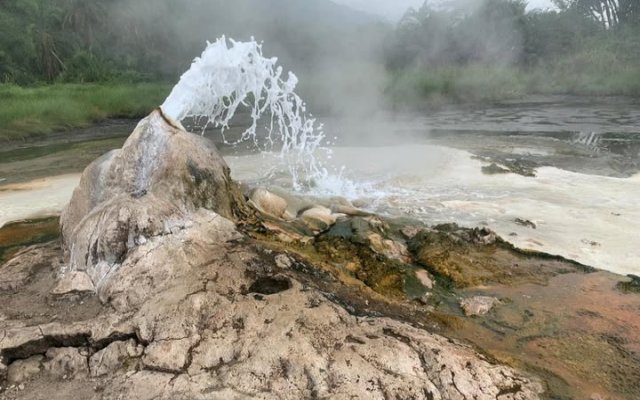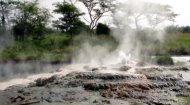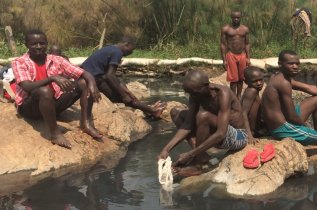
|
Kitagata Hot Springs |
Kitagata Hot Springs |
Kitagata Hot Springs |
Kitagata Hot Springs |
|
|

The Kitagata Hot Springs came to the attention of British colonists in 1904, who noted they reached a temperature of some 80 degrees centigrade. Analysis of the water in the hot springs revealed it contained sodium chloride, potassium chloride, lithium sulphate, calcium sulphate, calcium phosphate and magnesium chloride, all of which are noted for their medicinal purposes. However, there is no clinical evidence to support claims that the springs heal bad acne, cancer and other terminal illnesses, and recent research undertaken by "Save for Health Uganda" suggested that the springs actually don't have any healing powers at all. That wasn't enough to convince even nurses from nearby Kitagata hospital who drank the water when contracting diseases from patients. The cultural significance of Kitagata Hot Springs runs deep. It is not merely a tourist attraction but a cornerstone of community life and traditional medicine. For centuries, the springs have been a pilgrimage site for those afflicted with various ailments, from rheumatism and arthritis to skin conditions and general body aches. People visit believing in the water's inherent curative properties, often spending hours soaking or even drinking the mineral-rich water. Traditional healers frequently incorporate Kitagata water into their remedies and rituals, believing it enhances their efficacy. It also serves as a vibrant social hub, where people gather, share stories, pray, and find communal solace, fostering a strong sense of belonging and mutual support among its visitors. If you visit the Kitagata Hot Springs be mindful not to take photographs as there are many nude and semi-nude people there luxuriating in the water and also remember that there is a fascination with "muzungus" and even more so with stripped down ones so you may experience some touching you would prefer not to especially after night falls when, in general, the clothes come off. There are other Western Uganda hot springs at Semuliki National Park which you can explore here. |








